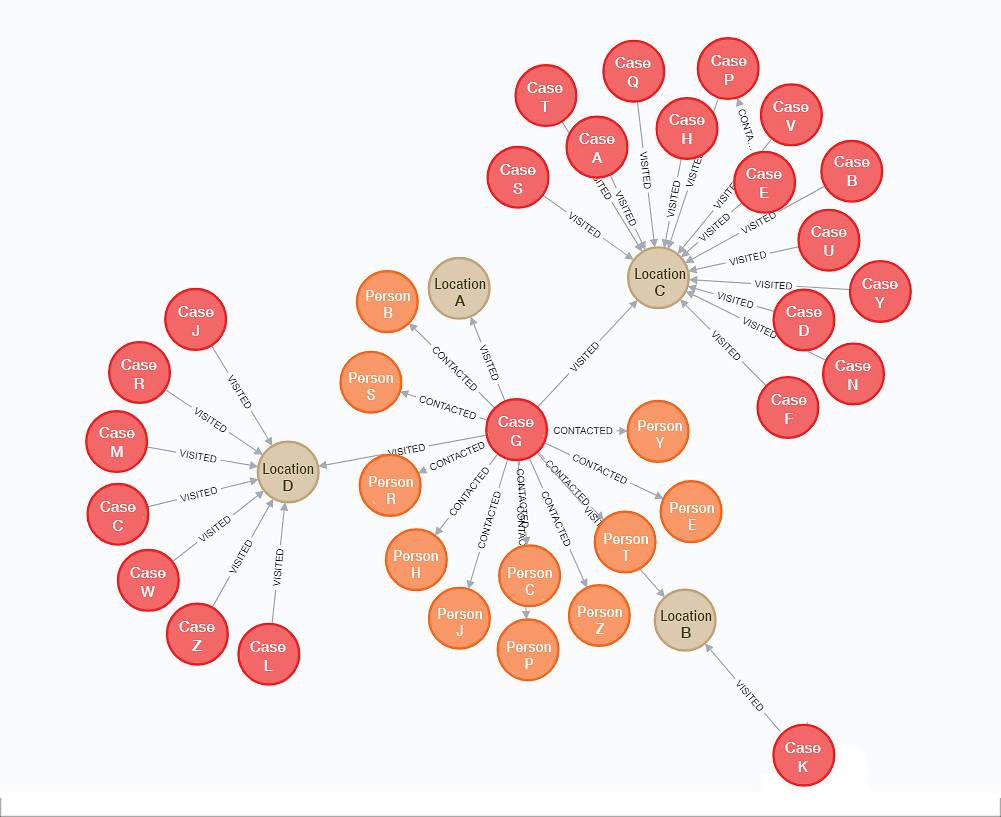SINGAPORE: A network analysis tool that helps automate contact tracing was able to plot links between COVID-19 clusters in Singapore, including Mustafa Centre, the Project Glory construction site and several foreign worker dormitories, one of which was S11 Dormitory@Punggol, currently with more than 2,000 infections.
The Defence Science and Technology Agency (DSTA) said that relevant case information was fed into the tool developed by its engineers from early April.
While links had been identified among those clusters, the tool substantiated the findings and found more cases connected to the clusters.
New confirmed cases who visited the mall in Little India were then linked to the construction sites as well as the dormitories, where the number of COVID-19 cases has exploded.
READ: COVID-19 infections in Singapore top 10,000, with 1,016 new cases; 12th person dies
Singapore on Wednesday reported 1,016 new cases of the disease, bringing the total number of cases above 10,000. Of these, the majority are migrant workers residing in dormitories. There are now more than 40 clusters at dorms, construction sites and related areas.
As of Wednesday, there were 113 cases linked to the cluster at Mustafa Centre. Using the tool, contact tracers were able to indicate a growing number of confirmed cases who had either visited or worked at Mustafa Centre in Little India.
Shopping mall Mustafa Centre at Syed Alwi Road. (Photo: Jeremy Long)
“This further supported the possibility that the Mustafa Centre cluster was the initiating point for a number of cases,” said DSTA.
Authorities have said that the rapid spread of the disease among migrant workers was a result of them having close contact at work sites and at social gatherings on their days off. They then brought the virus back to the dormitories where many workers live together in the same room.
The tool has also helped identify new clusters at the Ce La Vi rooftop bar and the Black Tap restaurant at Marina Bay Sands.
INTERACTIVE: All the COVID-19 clusters at dorms and construction sites
Explaining how the network analysis tool works, DSTA said that it maps out a visual network of cases using data analytics. Orange nodes represent people that the cases had come into contact with, while brown nodes represent the locations they had visited.
The links between nodes, symbolised by arrows, indicate their relationship to one another.

Image: DSTA
The mapping means that contact tracers can quickly see how many cases had visited the same location or had, at some point, crossed paths with a common contact. The findings are then used by the Contract Tracing Centre to do further checks.
“With the tool, it is now easier to examine much of the available information visually and establish possible connections through location, contacts or related timings, thereby reducing the cognitive load on contact tracers,” said DSTA.
“(It) allows contact tracing efforts to focus more on data collection and subsequent verification through ground checks.”
READ: COVID-19 – SAF medical personnel deployed at Singapore Expo community isolation facility
Data for this analysis comes from the contact tracing centres, where information for the activity maps of suspected and confirmed cases is compiled. One challenge is to get complete, accurate and detailed data from all the cases, said DSTA.
DSTA has also designed other tools to facilitate contact tracing, such as helping the Singapore Armed Force’s health monitoring and contact tracing teams collaborate in real time, and extracting and fusing data automatically for contact tracing operations.
Mr Poh Chun Siong, principal systems architect in DSTA’s C3 Development Programme Centre, said: “With the increasing number of local cases, we realised that there was a need to quickly establish possible links between cases and identify potential new clusters … DSTA will continue to work closely with the SAF and MOH to further accelerate contact tracing efforts.”
BOOKMARK THIS: Our comprehensive coverage of the coronavirus outbreak and its developments
Download our app or subscribe to our Telegram channel for the latest updates on the coronavirus outbreak: https://cna.asia/telegram




